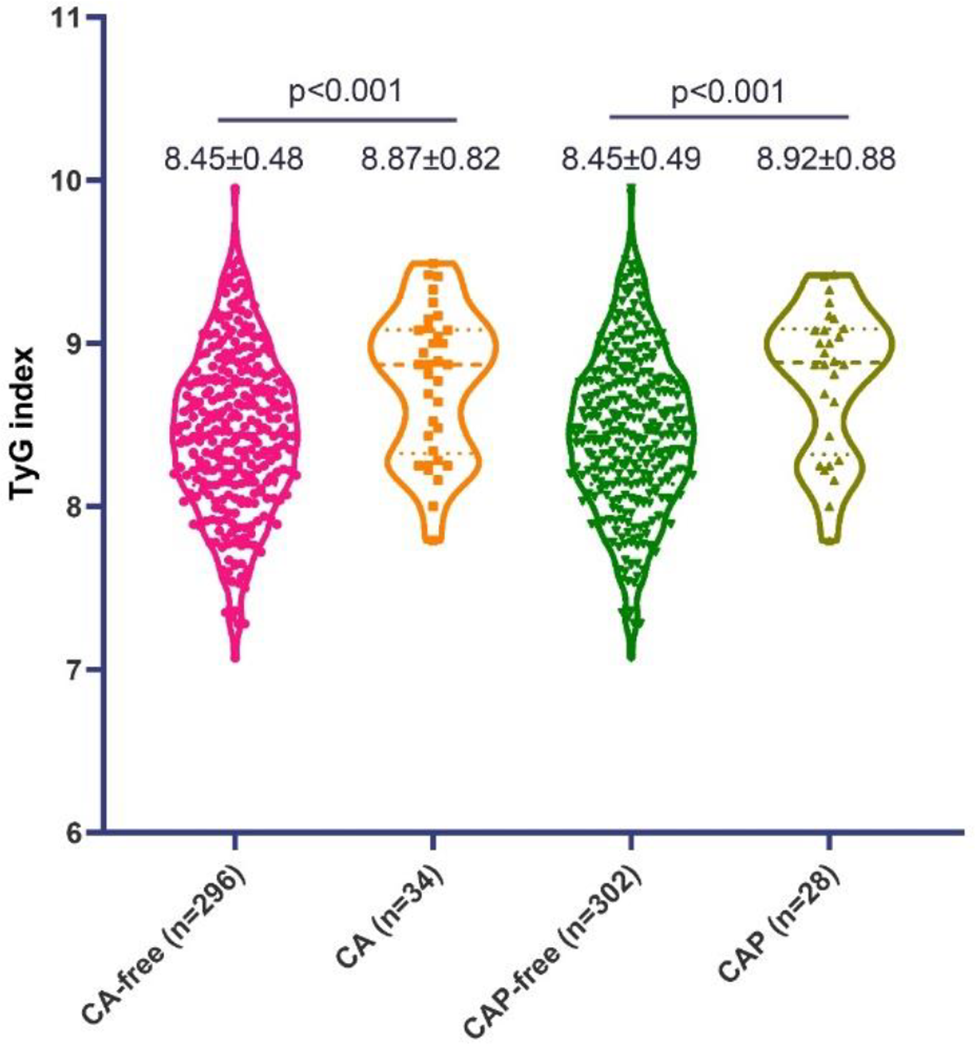

Background: Patients with systemic lupus erythematosus (SLE) are at substantial increased risks of cardiovascular morbidities that have become leading cause of death. The triglyceride-glucose (TyG) index, proposed as a surrogate marker for insulin resistance, appeared to be a good indicator of clinically overt cardiovascular events and subclinical atherosclerosis in general population. However, there is no evidence available on the correlation of TyG index with the occurrence of clinical and subclinical cardiovascular diseases in SLE population.
Objectives: We aimed to investigate the association between TyG index and carotid atherosclerosis in SLE patients.
Methods: This cross-sectional study in a tertiary care hospitals included 330 eligible consecutive SLE patients receiving carotid ultrasonography with integrated TyG index, calculated as ln [fasting triglycerides (mg/dL)×fasting glucose (mg/dL)/2]. According to the TyG index tertiles, the patients were categorized into three groups. Logistic regression models were applied to analyze the association of TyG index as continuous variables and tertiles with carotid atherosclerosis and carotid artery plaque.
Results: Of 330 SLE patients included, 97.1% were female, with a mean age of 39.1±12.7 years and median disease duration of 95 (38-170) months. The frequency of carotid atherosclerosis was 10.3% (34/330) and the mean TyG index was 8.49±0.54. As compared with those without carotid atherosclerosis, patients with carotid atherosclerosis had significantly higher TyG index (8.87±0.82 vs. 8.45±0.48, p<0.001) (Figure 1). With increases in TyG index tertiles, the frequency of carotid atherosclerosis was increased, showing 3.7% for tertile 1, 9.1% for tertile 2 and 17.7% for tertile 3 (P=0.003). Multivariate logistic analyses showed that each 1-unit increase in TyG index was significantly associated with prevalent carotid atherosclerosis (unadjusted OR 3.84 (1.79-8.26); fully-adjusted OR 4.40 (1.52-12.69)). The unadjusted and fully-adjusted OR for occurrence of carotid atherosclerosis were 5.54 (1.83-16.80) and 4.19 (1.16-15.23) in patients with tertile 3 compared to patients with tertile 1 of TyG index (P for trend 0.006 and 0.042, respectively). Similar findings were found for the outcome of carotid artery plaque.
Conclusion: The present study suggested that an elevated TyG index was associated with a higher risk of carotid atherosclerosis, independent of traditional cardiovascular risk factors and SLE-related factors. With the advantages of being simple, accessible and reliable, TyG index can be a useful tool for cardiovascular risk assessment for SLE patients in daily practice.
REFERENCES: NIL.
The level of TyG index in patients with SLE, stratified by carotid atherosclerosis and carotid artery plaque.

Acknowledgements: NIL.
Disclosure of Interests: None declared.